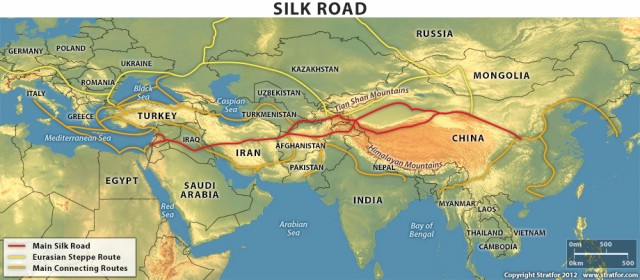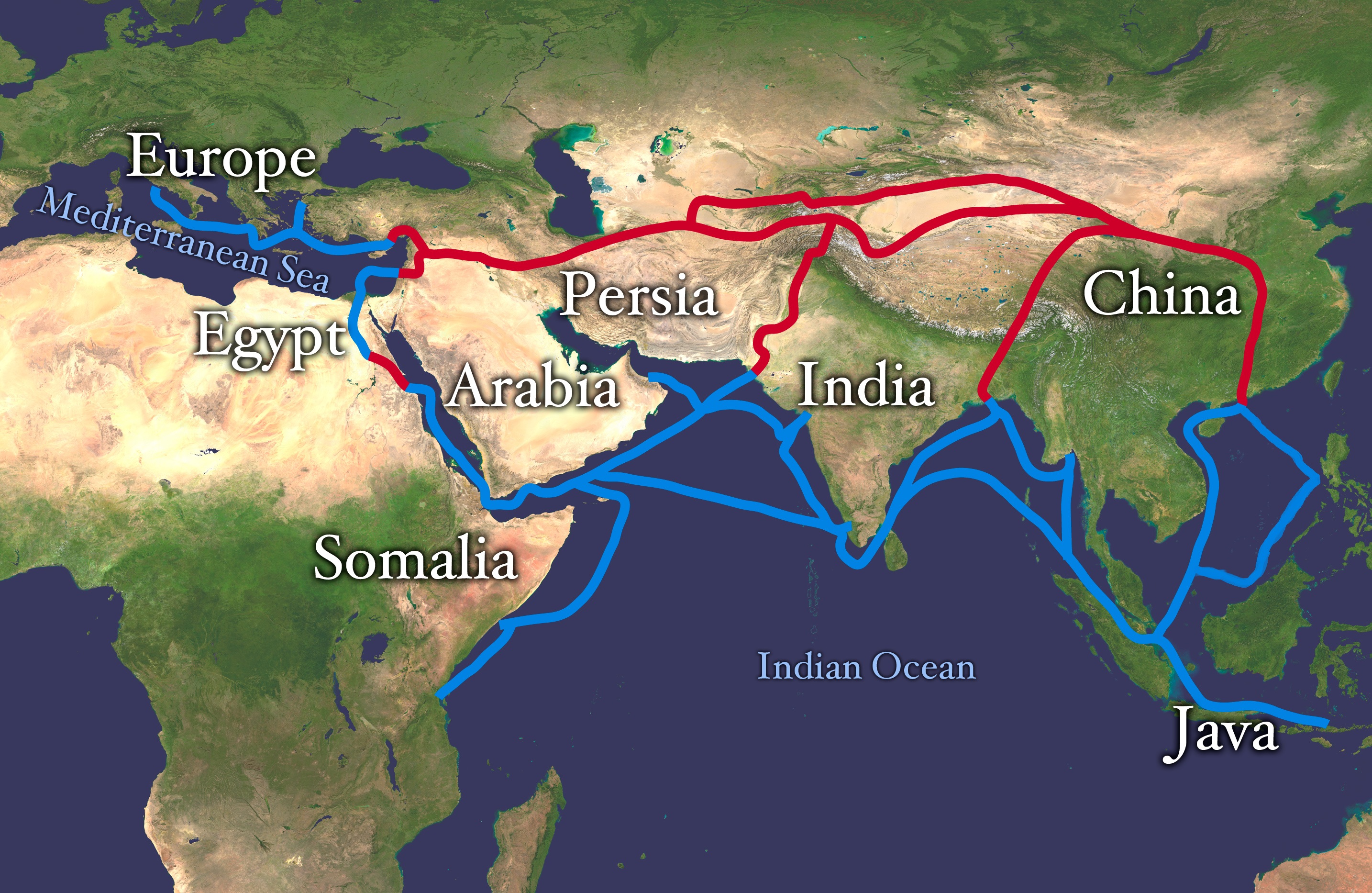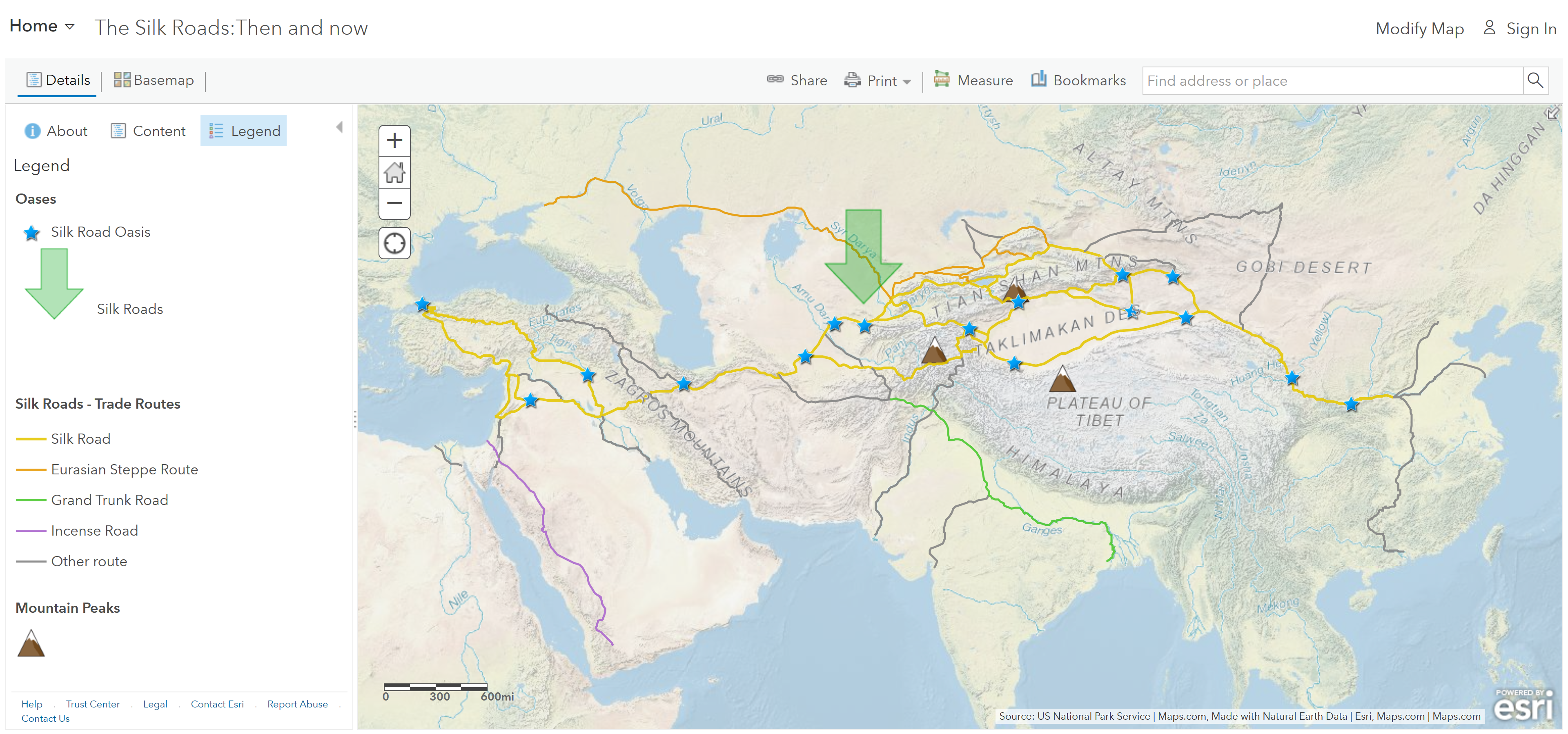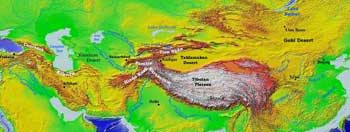Important Geographical Features of the Silk Road
The Silk Road was an ancient trading route that stretched across much of Asia from China to the Mediterranean Sea. Samarkand Uzbekistan Irtqaa Tehreem Kainaat UNESCO Youth Eyes on the Silk Roads.

Return Of The Silk Road Geographical Magazine
Marco Polo was an Italian explorer who traveled with his family across Asia.

. The route was named for the profitable trade in Chinese silk which took place along much of its route. And arrived at Xanadu the summer palace of the Chinese emperor Kublai Khan in 1275. A great deal of protection and stability was provided on the Silk Road by the Han.
The family left home in 1271 CE. First called the Silk Road in the 19th century the 4500-kilometer 2800 miles route is actually a web of caravan tracks which actively funneled trade goods between Changan now the present-day city of Xian China in the East and Rome Italy in the West at least between the. Different authorities define the borders and number of.
Other goods were transported via the Silk Road including precious metals perfumes tea and spices. The Silk Road or Silk Route is one of the oldest routes of international trade in the world. This was one of the most important trading.
With no one government to provide upkeep the roads were typically in. BETWEEN MESOPOTAMIA and CHINA stretched Central Asia large barren hostilea wasteland. The Silk Road was a series of trade routes between Asia Europe and parts of Africa.
The Concept of Asia. The Silk Road began in north-central China in Xian in modern Shaanxi province. It was from Xian that the first emperor of China Qin Shi Huang set out to unify all the.
The Silk Road was a series of trade and cultural transmission routes that were central to cultural interaction between the West and East. Here are 10 key cities along the Silk Road. Through this vast area the one link that allowed the two civilizations to trade with each other was the loosely defined cluster of trails known as the Silk Road.
The Silk Road had a few different geographical features for example the Syrian Desert the. Geographical Setting of the Silk Roads. The geography of the Silk Roads then is a complex interaction between the physical and climate zones of mountain steppe or grasslands and river valleys and oases which often are bounded by uninhabitable desert.
Marco Polo was the most famous Silk Road traderexplorer. These routes served to enrich many people and many countries while also allowing people to share ideas and. Thus populations could be dispersed in the grasslands or concentrated in the oases and river valleys.
One of the silk roads geographical features. The Maritime Silk Road went via seas to the Middle East and Europe. Even today the Silk Road runs through one of the harshest desert environments in the world with little water or.
First the Macedonians and Greeks conquered Persia and then Alexander the Great followed the Silk Road routes westward to Tajikistan where he founded Alexandria Eschate in 329 BC. Silk Road Economic Belt. The ancient cities on the Silk Road such as Changan now Xian Luoyang and four counties in Hexinow Wuwei Zhangye Jiuquan and Dunhuang in Gansu province and ruins of the ancient Western Regions countries.
On land the routes were divided into the northern route and the southern route. The Silk Roads. The Silk Road earned its name from Chinese silk a highly valued commodity that merchants transported along these trade networks.
Silk Road to China. Silk Road tourism may include. From Xian in China to Bukhara in Uzbekistan from Jeddah in Saudi Arabia to Venice in Italy cities.
The Silk Road grotto and Buddhist art treasures such as Dunhuang Cave Tianshui Maijishan Grottoes Yulin. The Silk Road. Edward Stojakovic Commons.
Silk Road Economic Belt. Its two most significant geographic features are Its remoteness from the sea hence the word Inner and thus very dry moisture-bearing winds from the ocean lose their wetness by the time they reach Inner Asia. It was during this Orientalist period that the idea of the Silk Road as a way of connecting European and Asian culture history and art was articulated by Baron von Richthofen.
Cities grew up along the Silk Roads as essential hubs of trade and exchange here merchants and travellers came to stop and rest their animals and begin the process of trading their goods. In 1786 William Jones had found the links between Sanskrit and Latin devising the idea of an Indo-European family of languages. The Silk Road was established by Chinas Han Dynasty 206 BCE-220 CE through territorial expansion.
It stretched for almost 8500 km. The Silk Road was a vast trade network connecting Eurasia and North Africa via land and sea routes. The Silk Road was the longest ancient overland trade route.
The expansion of Scythian cultures stretching from the Hungarian plain and the Carpathian Mountains to the Chinese Kansu Corridor and linking the Middle East with Northern India and the Punjab undoubtedly played an important role in the development of the Silk Road. In the Far East merchants begun their long journey along the Silk Road from Xian the capital of ancient imperial China. From XianLuoyang through Central Asia and to Constantinople on the eastern edge of Europe the Silk Road covered about 6000 kilometers or 4000 miles.
A caravan track stretched west along the Great Wall of China across the Pamirs through Afghanistan and into the Levant and Anatolia. Its length was about 4000 miles more than 6400 km. Advances in technology and increased political stability caused an increase in trade.
Silk Road to China. Starting in the capital city Changan now Xian the northern route traveled northwest through the Shaanxi. The Silk Road extended approximately 6437 kilometers 4000 miles across some of the worlds most formidable landscapes including the Gobi Desert and the Pamir Mountains.
While the phrase Silk Road conjures up an image of a single road traversing across the Eurasian continent historically the Silk Road was actually a network of multiple trade routes. Asia can be fruitfully thought of as the major part of a larger physical territory the continent of Eurasia. The Xian City Wall.
Marcos father Nicolo was a merchant from Venice Italy and he had established a profitable trading relationship with China. Where did the Silk Road start and end.

The Silk Road Article Khan Academy


No comments for "Important Geographical Features of the Silk Road"
Post a Comment